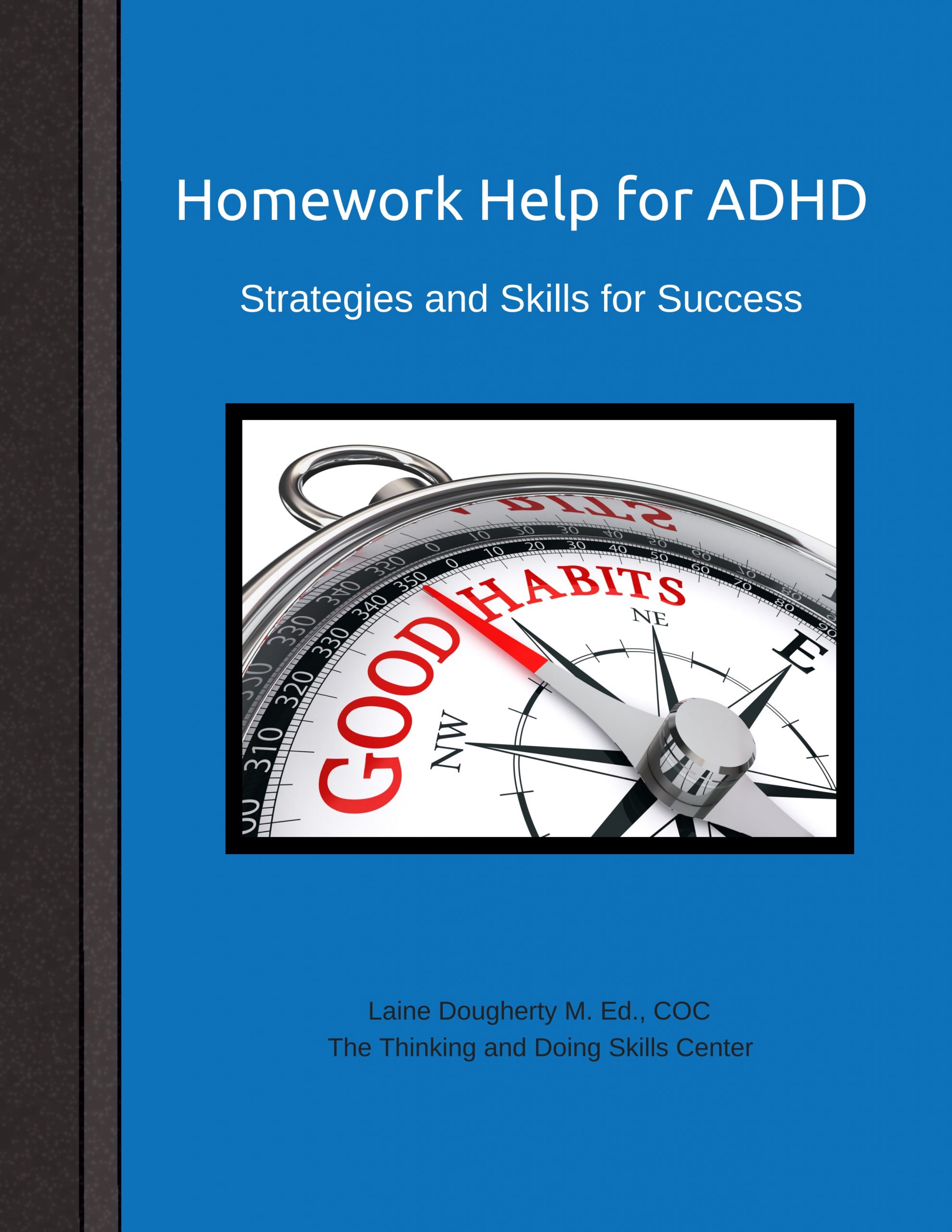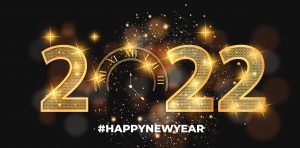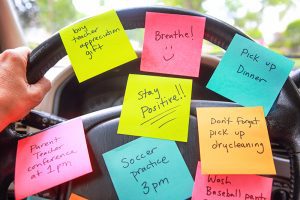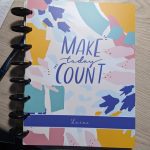 As soon as you wake up, what do you see? Is your bedroom space a sanctuary from the stress of daily life where you can easily and calmly start your day or is it a cluttered reminder of all you’re not taking care of and making you feel overwhelmed and frustrated each and every morning?
As soon as you wake up, what do you see? Is your bedroom space a sanctuary from the stress of daily life where you can easily and calmly start your day or is it a cluttered reminder of all you’re not taking care of and making you feel overwhelmed and frustrated each and every morning?
Now, think about how you would like your master bedroom to function. Do you need it to be a “home office” space as well? Is it a TV room where your kids can go or do you pile the clean laundry on the bed with the hopes of folding it and putting it away? Or is it a place to “hold” your clutter so it is not in the rest of the house? What do you want it to be?
Clutter and Disorganization can:
- Make getting dressed a hassle
- Impact your sleep
- Interfere with romance
- Waste time
- Increase your stress
- Make things harder and/or take longer
What is the impact?
The truth is we cannot expand our spaces to fit all of our things so we need to either reduce how much we own or redefine what is really important to us. By removing those things that you no longer want, need or use or that do not belong, you can begin to free up some space. In the master bedroom, both parties need to share their hopes for the space. In a child’s room, they need to have input as well.
Biggest impact in a master bedroom….electronics! The TV, the ipad and even the phones all impact your sleep cycles and serve to distract you from the true priorities of that room. A new study from Brigham Young University examined how technology interferes with relationships. The researchers concluded that “technoference” can be damaging not just to a relationship but to your psychological health as well.
Clutter and disorganization can also interfere with your morning and evening routines. Those routines that are supposed to help you calmly end your day and prepare yourself for sleep can be totally thrown off if you happen to step on a lego. (You know what I mean)
Various studies also mention the effects of clutter on children. Everything from scoring lower on tests of cognitive ability and self-regulation to learned helplessness and withdrawing from academic challenges. Also, being overwhelmed by the number of options can prevent kids from using their time creatively.
Ideas to Help
- Declutter – seriously….declutter
- Reduce your clothing so that it fits in your storage spaces when all the laundry is done (dressers and closets)
- Organize by grouping like things together
- Hooks for tomorrow’s outfit and things that can be worn again
- Bins inside drawers to hold things you don’t need to fold (pjs, socks, etc.)
- Clear off all flat surfaces so only the necessities are there
- Remove extra pillows and décor
- Label clear bins in kids’ rooms to help with organization
- Make the master bedroom inviting (and not kid friendly????)
And lastly, when you get up in the morning, make your bed. It changes the way you think about your room and gives you an automatic win for the day. So, calm or chaotic – the choice is yours.
Photo by Steven Ungermann on Unsplash






 Farewell 2021 – Although I would like to say I am happy to see you go, the reality is that I don’t remember much of what happened in 2021. What do you remember from 2021?
Farewell 2021 – Although I would like to say I am happy to see you go, the reality is that I don’t remember much of what happened in 2021. What do you remember from 2021? Each year we start out with the best of intentions. Sometimes though, those intentions can turn out to be so much extra work that we quickly give up. Let’s take a look at three things you can do to make sure you are doing things for the right reasons.
Each year we start out with the best of intentions. Sometimes though, those intentions can turn out to be so much extra work that we quickly give up. Let’s take a look at three things you can do to make sure you are doing things for the right reasons. Procrastivity is part procrastination and part activity. We all know that procrastination is not a good thing. It means putting off things that you know you really should be doing. However, procrastivity is when you “put off” (procrastinate) on what you REALLY should be doing in favor of another activity that also needs to be done but is less brain taxing. Sure, the (less important) task needs to be done and you want to feel some sense of accomplishment – but, should it be the priority? Probably not. You will feel the cost of it later when the real priority is due. For example, doing laundry instead of the taxes.
Procrastivity is part procrastination and part activity. We all know that procrastination is not a good thing. It means putting off things that you know you really should be doing. However, procrastivity is when you “put off” (procrastinate) on what you REALLY should be doing in favor of another activity that also needs to be done but is less brain taxing. Sure, the (less important) task needs to be done and you want to feel some sense of accomplishment – but, should it be the priority? Probably not. You will feel the cost of it later when the real priority is due. For example, doing laundry instead of the taxes. The kitchen is the heart of the home. It’s where we cook, we eat and we connect with our loved ones. Special occasions will find friends and family gathering there too. Shouldn’t it be an organized, peaceful place?
The kitchen is the heart of the home. It’s where we cook, we eat and we connect with our loved ones. Special occasions will find friends and family gathering there too. Shouldn’t it be an organized, peaceful place?
 Have you ever been frustrated with something that you knew wasn’t working for you, yet didn’t take the time to fix it? Often, we tolerate those “niggly” things that we should just take care of because we think they will take a long time or at the moment we don’t have the time to fix it. So, let’s put together a list to see what you have been tolerating and what it is time to deal with.
Have you ever been frustrated with something that you knew wasn’t working for you, yet didn’t take the time to fix it? Often, we tolerate those “niggly” things that we should just take care of because we think they will take a long time or at the moment we don’t have the time to fix it. So, let’s put together a list to see what you have been tolerating and what it is time to deal with. Last month we talked about cleaning up some of the paper piles that you have been collecting and reducing the amount of paper you hold onto “just in case.” I hope that you are feeling lighter by now and can focus on reducing the number of places you keep the remaining papers so you can find what you need when you need it. If you didn’t finish, that’s okay but try to deal with all the paper that is coming into your home each day. Don’t wait until you have cleared out the backlog as that is an ongoing process, not one that can be done quickly.
Last month we talked about cleaning up some of the paper piles that you have been collecting and reducing the amount of paper you hold onto “just in case.” I hope that you are feeling lighter by now and can focus on reducing the number of places you keep the remaining papers so you can find what you need when you need it. If you didn’t finish, that’s okay but try to deal with all the paper that is coming into your home each day. Don’t wait until you have cleared out the backlog as that is an ongoing process, not one that can be done quickly. Long term Storage: This storage should be out of the way but still easy to get to. You don’t want it taking up valuable space in a closet when it can stay safely in a plastic box in the attic or a dry basement. As your kids grow, this may also be the space you put there most treasured items. Be sure to use an archival box to protect them. I hesitate to even mention warranty booklets – most are available online so there is no need to hold onto them. Think about how many times you have actually had to use one of them. Was it worth holding onto? The biggest problem with long term storage is it mostly likely will not get looked at again. Every year though when you go to put your tax documents away you can take out the documents from 4 years ago and shred them. If you are getting electronic copies, you can delete them too. The records your computer is holding also need to be gone through and/or put into folders that have broad categories with very specific file names. Computer documents are a whole newsletter on their own. I mention them because the push now is to scan copies and shred the paper copies in order to reduce the paper in your home. If you do that, be sure to tag them and use specific file names so you can find what you are looking for.
Long term Storage: This storage should be out of the way but still easy to get to. You don’t want it taking up valuable space in a closet when it can stay safely in a plastic box in the attic or a dry basement. As your kids grow, this may also be the space you put there most treasured items. Be sure to use an archival box to protect them. I hesitate to even mention warranty booklets – most are available online so there is no need to hold onto them. Think about how many times you have actually had to use one of them. Was it worth holding onto? The biggest problem with long term storage is it mostly likely will not get looked at again. Every year though when you go to put your tax documents away you can take out the documents from 4 years ago and shred them. If you are getting electronic copies, you can delete them too. The records your computer is holding also need to be gone through and/or put into folders that have broad categories with very specific file names. Computer documents are a whole newsletter on their own. I mention them because the push now is to scan copies and shred the paper copies in order to reduce the paper in your home. If you do that, be sure to tag them and use specific file names so you can find what you are looking for. Music is everywhere. Sometimes we hear it and sometimes we don’t. You may suddenly realize you have a “tune” stuck in your head and have no idea that it was playing in the store you just left. Students can now bring their music to school and use it while they work independently.
Music is everywhere. Sometimes we hear it and sometimes we don’t. You may suddenly realize you have a “tune” stuck in your head and have no idea that it was playing in the store you just left. Students can now bring their music to school and use it while they work independently.
 Motivation is that “intangible thing” that drives us to do something willingly. I’m sure you have felt it when you get into a project and the time flies by and you are making great progress. You may also have experienced motivation’s evil twin “procrastination.” That’s when no matter how hard you try you cannot seem to make progress. It is often accompanied by feelings of guilt, frustration, stress and anger.
Motivation is that “intangible thing” that drives us to do something willingly. I’m sure you have felt it when you get into a project and the time flies by and you are making great progress. You may also have experienced motivation’s evil twin “procrastination.” That’s when no matter how hard you try you cannot seem to make progress. It is often accompanied by feelings of guilt, frustration, stress and anger. January 20, 2021, Inauguration day, was the start of President Biden’s term as the 46th President. He has mentioned that he has an ambitious plan for his first 100 days. That got me thinking why not create my own 100-day plan? Think of all that you could do/change/create or improve in 100 days. What would that feel like?
January 20, 2021, Inauguration day, was the start of President Biden’s term as the 46th President. He has mentioned that he has an ambitious plan for his first 100 days. That got me thinking why not create my own 100-day plan? Think of all that you could do/change/create or improve in 100 days. What would that feel like?